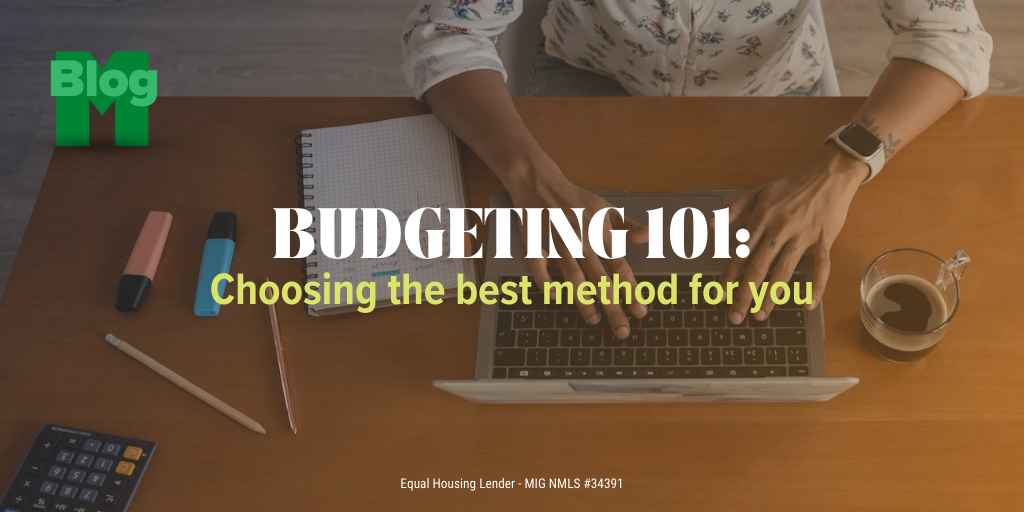
Saving for a home is one of the most exciting and important financial goals, but it can also feel a little overwhelming. That’s where budgeting comes in! A good budget helps you save for that all-important down payment while also preparing for unexpected costs after closing—because let’s face it, owning a home comes with surprises, from repairs to emergencies. No matter where you are in your homeownership journey, having a budget in place can help you feel confident and in control.
Why Budgeting is a Game-Changer
Budgeting is all about giving yourself the freedom to enjoy life without worrying about where your money is going. When you’re saving for a house, it’s crucial to know how much you need for your down payment, closing costs, and other related expenses, like property taxes or insurance. But the value of budgeting doesn’t stop once you’ve got the keys to your new home—it also helps with the unexpected costs that might pop up after closing. Whether it’s an emergency roof repair, a surprise hike in utility bills, or something fun like a spur-of-the-moment vacation, having a budget makes sure you’re prepared for whatever life throws your way.
Three Popular Budgeting Methods to Consider
Now, let’s dive into some popular budgeting methods that can help you reach your financial goals. There’s no single “right” way to budget—it’s all about what works best for you! Here are three different methods, each with its own perks.
1. The 50/30/20 Rule
If you’re new to budgeting or just want a simple, no-fuss approach, the 50/30/20 rule could be a great fit. It’s easy to remember and easy to apply to your day-to-day spending. Here’s how it breaks down:
- 50% for Needs: Essentials like your mortgage (or rent), groceries, transportation, and insurance.
- 30% for Wants: Fun stuff! Dining out, hobbies, entertainment—anything that makes life enjoyable.
- 20% for Savings and Debt Repayment: This portion goes toward building your savings, including your emergency fund, and paying off debt.
This method is straightforward and flexible, making it great for people who don’t want to track every little expense. But, depending on your lifestyle and location, the percentages might need some tweaking—especially if your rent or mortgage takes up more than 50% of your income.
2. Zero-Based Budgeting
Looking for something with a little more structure? Zero-based budgeting could be your go-to. This method involves assigning every dollar of your income to a specific purpose, whether it’s paying bills, saving, or spending on yourself, so that your income minus your expenses equals zero by the end of the month.
For example, if you make $4,000 a month, you’ll allocate that entire $4,000 into different categories like rent, utilities, groceries, and savings until every dollar is accounted for. The upside? It helps you see exactly where your money is going, and it’s a great way to make sure you’re saving for your down payment or building an emergency fund. The downside is that it requires a bit more effort to track, but many find the control it gives totally worth it!
3. The Envelope System
The envelope system is a classic method that can work wonders if you struggle with overspending. With this approach, you physically set aside cash for specific categories (or use digital envelopes through apps). For example, if you budget $400 for groceries, you’ll only spend what’s in your “groceries” envelope. Once it’s gone, you don’t spend any more in that category until the next month.
This method is great for building discipline and sticking to your spending limits because it forces you to be mindful of how much you’re spending. If you prefer to swipe your card, though, there are apps that can help you mimic the envelope system without using actual cash.
How to Pick the Right Budgeting Method for You
The best budgeting method is one that fits your lifestyle and feels manageable. If you’re someone who prefers flexibility and simplicity, the 50/30/20 rule might be just right. On the other hand, if you like knowing where every penny goes, you might find zero-based budgeting more satisfying. And if you’re trying to rein in your spending, the envelope system could help you stay on track.
At the end of the day, budgeting is about building good habits, not perfection. It’s okay to make adjustments along the way, and you might find that combining elements of different methods works best for you. The important thing is to find a system that helps you stay on top of your savings goals while leaving room for the things that make life enjoyable.
Budgeting might seem like a chore at first, but once you find the method that works for you, it becomes second nature. Whether you’re just starting to save for a down payment or preparing for the joys (and surprises) of homeownership, having a solid budget will give you the confidence to achieve your goals—and enjoy your new home to the fullest.
![Mortgage Investors Group in [Dynamic1]](../assets/images/mortgage-investors-group.svg)


